Respiratory physician Lutz Beckert considers chronic obstructive pulmonary disease management, including the prevention of COPD, the importance of smoking cessation and pulmonary rehabilitation, and the lifesaving potential of addressing treatable traits. He also discusses the logic of inhaler therapy, moving from single therapy to dual and triple therapy when indicated, as well as other aspects of management
JAMIE AND HIS BAND OF BOTS: Scaling the paperwork mountain
JAMIE AND HIS BAND OF BOTS: Scaling the paperwork mountain
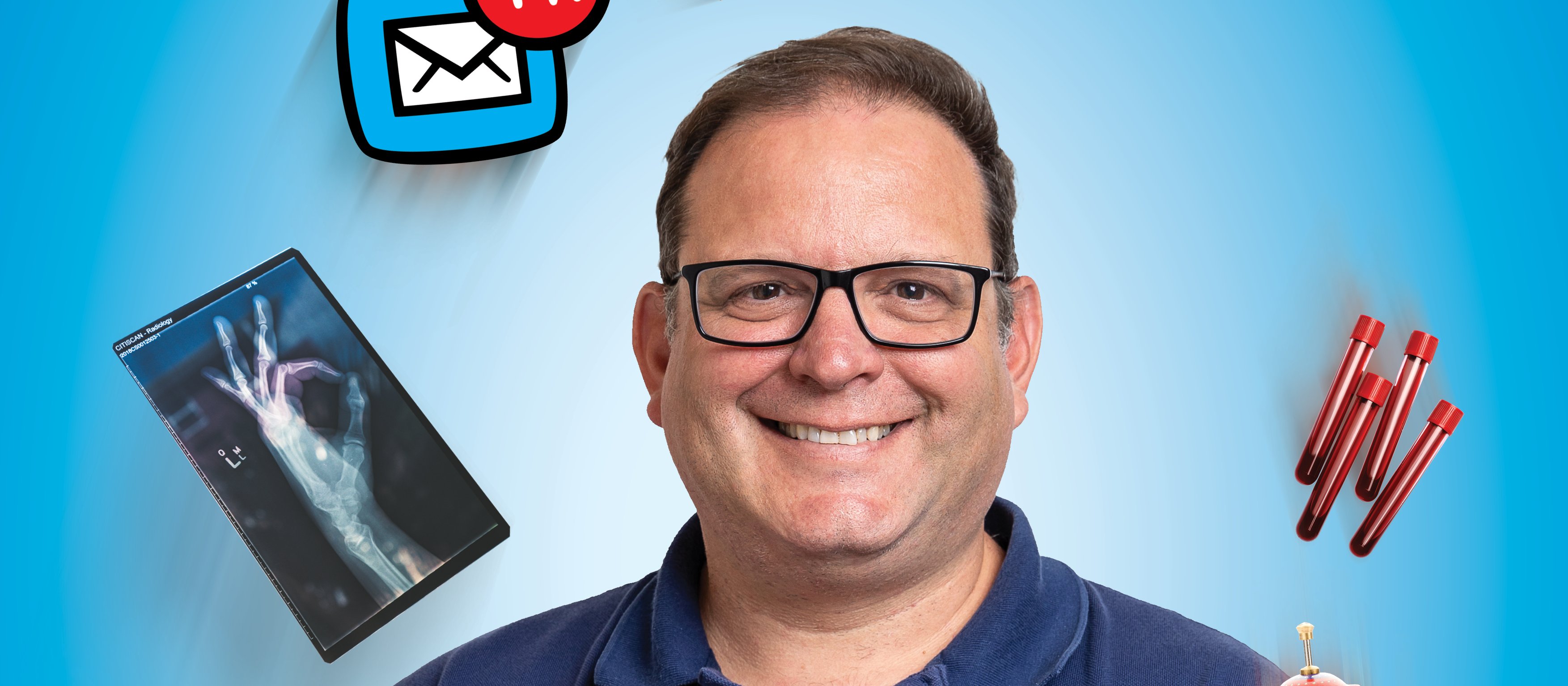
Here at New Zealand Doctor Rata Aotearoa we are on our summer break! While we're gone, check out Summer Hiatus: Stories we think deserve to be read again! This article was first published on 23 November 2022.
General practices are suffocating under the weight of emails and paperwork. Amanda Cameron takes a look at one GP’s inventive response, and traverses other approaches and views
"There’s got to be a better way.”
That was the lightbulb moment for Auckland specialist GP Jamie Shepherd when pondering the crushing weight of his team’s email load last year.
Just 17 months later, the self-confessed geek has built seven robots that are helping to shovel away the mountain of online paperwork that was burying him and his colleagues at Mission Bay Doctors.
The bots are software algorithms that handle a range of tasks from filing screening results to doing cardiovascular risk assessments (CVRAs) – and they work “like a dream”, Dr Shepherd says.
The algorithms, which run alongside the practice’s management system, are clinically safe and shave about 60 per cent off the time it takes a human to do the same job, he says.
“From our doctors’ perspective, they’re obviously loving it. And from a patient perspective, where the robots are working, we’re nailing our targets, because they’re doing it really effectively. It’s actually a more accurate and better process.”
It’s been a huge learning curve for Dr Shepherd since he set out in June last year to lighten the administrative burden at the five-GP, 4500-patient ProCare practice.
A widespread feeling the inbox load had reached crisis point was backed up by his finding that the number of emails arriving at the practice, which he co-owns, had ballooned from just over 8000 in 2017 to around 14,500 in 2021 – an 81 per cent increase in just four years.
Concerned for staff morale, the tech-savvy doctor thought there must be a way to use robotics to automate some of the grindingly repetitive and “quite regimented” tasks team members perform every day.
“Happy clinicians, happy nurses, happy administrative staff matters a lot,” he says. “There’s a lot of repetition to what we do, so I just wanted to try and increase our efficiency, and... our capacity to deliver – try and keep everybody happy.” He was particularly determined to automate the processes for doing CVRAs, which are so laborious that “nobody really wants to do them”.
“All the data is there but we have to manually replug it in and hit ‘send’, and then wait a minute for a result to come back before we do something about it. That’s just a total waste of time.”
After clearing the idea with ProCare’s clinical governance committee, Dr Shepherd, who is the PHO’s associate clinical director, started “playing around” with a few of the platforms available for people to write robotic process automation algorithms.
He’d never written such an algorithm before, so he started by creating a “simple” bot to handle mammogram results emailed from BreastScreen Aotearoa.
And it was quicker and easier than he thought.
“It was a Friday night and by Saturday afternoon I’d finished my first fairly basic robot. And I thought...I can really expand this: this is something that can make our lives easier in Mission Bay. And it’s just kind of gone from there.”
Using automation to file patient results ACCURATELY AND WITHOUT ANY REVIEW or clinical insight is a significant clinical risk
The mammogram bot replicates what a clinician does after a result from the breast screening programme lands in their inbox: scans it, and deals with it, accordingly. But the bot works much more quickly, thoroughly, accurately and consistently, Dr Shepherd says.
Recognising a normal result, it adds all the appropriate information to the practice management system (PMS), updates the recall date, and, where required, sends the patient a message by text or patient portal.
It then files the normal result, removing it from the inbox, and moves onto the next one. Abnormal results are left in the inbox for the clinician to handle.
Dr Shepherd says the whole process involves 119 steps but takes the robot only 12 seconds per normal result. By contrast, it takes him about 37 seconds to complete the roughly 40 steps involved in doing it manually, and he’s quicker than most.
That means every time the robot files a normal result, it saves the practice at least 37 seconds.
And, whereas a human often takes shortcuts or forgets the occasional step, the robot never skips a step or files an abnormal result by mistake, because it cannot. It is programmed to follow its algorithm and does so precisely and unerringly, every single time.
Dr Shepherd programmed the mammogram bot to recognise a normal result from BreastScreen Aotearoa, exactly as set out by the National Screening Unit.
“You make sure that it matches the entire text from the entire normal result from the top to the bottom, and then, only when it matches that, do you let it proceed.”
If it comes across a missing or unexpected piece of data, it is programmed to stop and send an error notification, prompting him to take a look.
“You’ve got total control over that safety part, which actually we don’t have with humans,” he says. “It’s one of the things about robotics that works really nicely and actually makes it more accurate than a human being.”
For example, the practice team often used to find recalls that didn’t quite match the results, so they were recalling patients who had already had a cervical smear done, because nobody had updated the recall properly, he says.
“Not seeing those results in my inbox was like a dream. And actually knowing that each recall that comes up is actually valid and we haven’t missed one [was part of that]. “All those things are solved in these kinds of robotic processes,” he says.
Since that Friday night in early July 2021, Dr Shepherd has built six more bots that are also still running at Mission Bay Doctors, as well as several others that ran temporarily to address a short-term need.
Of those that are still running, two file normal results from the national cervical and bowel screening programmes, and another two handle COVID-19 results and the paperwork involved in COVID swabs.
The COVID bots were created during the Delta outbreak of August 2021, when New Zealand locked down for the second time and a rising tide of COVID results flooded practice inboxes.
To deal with the sudden extra workload, Dr Shepherd worked with ProCare to write an algorithm to file negative COVID results and “deduplicate” what he describes as the “really irritating” twin notifications of positive results from COVID-19 Care in the Community and the Auckland Regional Public Health Service.
A separate robot to handle the administration around COVID swabs – printing the swab label, creating the lab form, and notifying public health – saved clinicians at Mission Bay Doctors about three to four minutes per swab.
At a time when the practice was doing about 100 swabs a day, Dr Shepherd says the bot was a “game changer” saving “massive” amounts of administration time.
The COVID result bot was equally successful, and was rolled out to 13 other ProCare practices with the same PMS as Mission Bay Doctors, between December 2021 and February 2022. Since then, the bot has filed 12,708 negative results, deduplicated 15,887 positive ones, forwarded COVID care to the appropriate clinician 12,496 times, and managed notifications to patients 27,555 times.
The pandemic also prompted Dr Shepherd to write an algorithm to reconcile payments from Primary Options for Acute Care (POAC), the Auckland region’s mechanism for funding primary care schemes to keep people out of hospital.
Reconciling those payments became “really onerous” for the practice when the vast amount of COVID work being done saw the number of POAC reconciliations jump from under 20 to about 1000 per month, he says.
In the past 12 months, the bots at Mission Bay Doctors have filed 636 normal mammogram results, 567 normal cervical smear results and 244 normal bowel screening results. They have also filed 350 negative COVID results, deduplicated 1539 positive COVID results and completed more than 2200 POAC reconciliations.
And, to Dr Shepherd’s delight and the relief of his practice colleagues, 700 CVRAs have been performed by the muchsought-after, time-saving CVRA bot, which he created mid last year.
READ MORE:
- 'I think we should call them Murray': South Link looks to 'robo docs’ to lighten workload
- Rules on test results due this year
- Inbox wranglers lighten GPs' load
- Clinical assistants easing pressure for Wellington practices in pilot programme
- Intelligent robotics are coming to a medical centre near you
The CVRA bot ensures that all patients enrolled at Mission Bay Doctors who need an assessment get one. The clinicians no longer have to spend just over five minutes doing each one, or worry about repeating the process every year or so, depending on the patient’s previous level of risk.
Instead, if all the right data are present, the bot updates each CVRA when it’s due and notifies Dr Shepherd if the patient’s risk reaches a point where human intervention is required.
And, if a measurement is missing, the bot automatically takes the right steps to fill in the blank, so next time it runs, “hopefully the results are there and the CVRA can take place without the need for any human intervention”, Dr Shepherd says. For example, it texts the patient to come in for a blood pressure check or produces a lab form and texts the patient to get a blood test.
“Trawling through and doing that for hundreds of patients was actually really, really onerous,” Dr Shepherd says. “And because the work was onerous and slow, it’s often the last thing that we got to.”
Now, because of the bot, 95 per cent of his patients have up-to-date CVRAs each month, and, best of all, 100 per cent of his high-risk patients are on triple therapy with an antithrombotic and medicines to lower lipids and BP.
That’s possible because a spreadsheet produced by the bot each time it runs, shows patients ordered from highest to lowest risk so Dr Shepherd can check they are on the right therapy. “You’ve got these beautiful lists of patients that you can intervene on, that you wouldn’t have known about if you didn’t have the work done for you,” he says.
“We can respond to the result, and, for me, responding to the result is way more important than running the test.”
Dr Shepherd has not calculated how much time and paperwork has been saved by his band of bots, but says: “When they’re not working, you definitely miss it.”
I t’s not Dr Shepherd’s first IT rodeo. He helped Whakarongorau Aotearoa test its virtual consultation service back in 2017, and is the clinical director of CareHQ, an app-based virtual healthcare service launched in November 2020.
But with the experience he has gained in the last year, Dr Shepherd estimates he can write any bot in about 90 minutes compared with the eight hours it took him to write the first one.
The agility of the process means he can get new robots on the job quickly to respond to a sudden flurry of inbox activity at his practice that is suitable for robotic intervention.
He can also tweak his robots overnight to adapt to changes to the PMS or the format of incoming digital emails and documents, rather than waiting for the PMS to “catch up”.
For example, he wrote a temporary bot in August 2021 to file notifications from the COVID Immunisation Register, until the PMS adapted to do the same, a couple of months later.
For Dr Shepherd, bots are a quick way to deal with problems that it takes a PMS too long to solve, and he wants to make them as widely available as possible.
“We know robots work, we know they can be effective, we know they can be clinically safe. We’ve got thousands and thousands of audited results for that.
“Now we need a way to be able to deliver this to as many practices as want it,” he saysWith this goal in mind, Dr Shepherd is working with ProCare to develop bots, on commercial platform UiPath, that are agnostic to the type of PMS in place and can be rolled out at scale.
A three-month pilot of an “enterprise level” bot for cervical smear results began at Mission Bay Doctors in August, with a view to wider rollout if it succeeds.
His previous bots were all written using an open-source platform, and work well with Indici, the PMS used by Mission Bay Doctors, but they cannot be rolled out across hundreds of practices, Dr Shepherd says.
The enterprise-level bot needs to be able to work not only within Cloud-based systems, such as Indici and Medtech Evolution, but also legacy systems, such as Medtech 32.
They also need to work in a way that can be managed properly at scale. At Mission Bay, Dr Shepherd personally oversees the bots, watches them as they run, checks the reports they produce, and fixes any glitches. But some clinicians “won’t want to know”, he says.
“It’s great that I can benefit from this, and it’s great that our practices who are on Indici can benefit from some of the basic components of it, but we need a way to be able really to roll it out in a way that’s really an enterprise-level process.”
The pilot is due to end later this month. ProCare is providing clinical oversight and governance, reviewing the bot’s password-protected reports as part of clinical sign-off.
If the pilot proves successful, ProCare will decide whether to fund the bot service for network members or charge them a small fee.
Dr Shepherd says he’d like to see “lots of bots” developed to help practices around the country to improve their outcomes, improve efficiency, and increase capacity and work balance for everyone in community care.
“Obviously the idea is to solve that paperwork burden.” And he would like to see Te Whatu Ora fund it.
“It’s not even expensive to run. It’s crazy that we spend $2 million on [a request for proposal] and don’t even have an outcome, when something like this might only cost, for the whole country, maybe a couple of hundred thousand dollars a year to run.
“And I’ve been running them for absolutely nothing, which shows you what you can do.”
Elsewhere in New Zealand, moves are afoot to help clear GPs’ inboxes. Northland’s Mahitahi Hauora PHO is trialling the use of remote nurses to do it, and, in Wellington, Tū Ora Compass Health is trying out the use of non-regulated clinical assistant staff.
At a national level, a new set of rules is being developed by the Health Quality & Safety Commission to stem the tide of unnecessary or inappropriate requests for GPs, going into their inboxes. The rules to clarify who has the responsibility to chase up test results ordered in hospitals are expected to be in place before Christmas.
Other New Zealand players are in the automation space, but Dr Shepherd is unaware of anyone other than himself already using robotics to help practices out at a clinical level.
“It’s definitely a clinical first,” he says.
Virtual general practice Tend Health, which aims to provide a slicker patient experience and a better clinician environment via a “super app”, is automating a range of tasks to reduce the burden of medical administration requirements, according to chief network officer John Macaskill-Smith.
None are fully automated yet – they rely on the involvement of a central clinical team – but the new processes are starting to remove the need for part-time GPs to log in when they are not at work, Mr Macaskill-Smith says.
Hamilton-based IT firm Houston Technology Group has recently launched two administrative robots in New Zealand: one to automatically enter ACC and enrolment data into the PMS, and another to file patient correspondence. The former is used by “many” clinics throughout the country, medical software entrepreneur and Houston founder Alan Chew says.
Meanwhile, international company Aceso has a suite of products which Christchurch-based chief executive Gabe Rijpma says link different parts of the health system and offer “intelligent referrals”, allow online booking, automate claims and payments, and simplify clinical workflows and care journeys.
Aceso has built bespoke products for several primary care organisations, with Tū Ora Compass Health using a new platform since 2020, and Tāmaki Health using its Bettr teleconsultation product since 2021. WeCare Health in Christchurch has just launched two new nurse-led, doctor-supported clinics with the help of Aceso.
South Link Health is developing a suite of “smart care” software products that integrate with Medtech that aim to improve the efficiency and safety of patient management: a self-service clinical measurement kiosk; a decision-support tool to manage the PMS inbox; a digital triage application to reduce the number of face-to-face appointments; and a tool to ensure stable patients with long-term conditions can be well monitored and safely managed with fewer consultations.
The latter two products are still in early testing, but the first shipment of 40 CareKiosks will be rolled out after they arrive from China later this month. InboxManager will be released next year, according to South Link’s outgoing chief executive, Murray Tilyard.
Nationwide, GPs and practice nurses spend an estimated $200 million worth of time dealing with their inboxes each year, according to Professor Tilyard.
Nevertheless, not everyone is a fan of using automated clinical processes.
Medtech chief executive Geoff Sayer says the latest release of Medtech Evolution automatically processes payments and reconciliations, and a later release will include a form that will automate patient registration and enrolment.
But some areas, such as the provider’s inbox, are too risky for the application of robot automation, Mr Sayer says.
“While it is an administration burden opening and reviewing hundreds of messages and results a day, using automation to file patient results accurately and without any review or clinical insight is a significant clinical risk.
“If the automation is inaccurate or fails, the patient follows-ups and checks that would be missed put both the healthcare provider and the patient at risk.”
Mr Sayer adds that robotics are only safe if they are integrated into a PMS in an “approved and supported” manner. Medtech regularly has to fix unsupported automation integrations from New Zealand-based companies, he says.
“Currently we have cases of unapproved robot automations emulating human keystrokes to enter [enrolment] data into the PMS screens, overwriting existing patient demographic data and corrupting patient records.
“When new patients are added via this robot automation, there is no process to check the information against existing patient data in the PMS, and multiple duplicate patient records are being raised each time and distributed throughout the PMS.”
Auckland-based specialist GP Ashwin Patel, who developed the PMS MyPractice 23 years ago, is also cautious about automation. He says he has an empty inbox at the end of most days, which he puts down to a combination of the rules in his PMS and his own good habits of regular inbox clearing and not over-ordering tests.
MyPractice, which Dr Patel rates as one of the more “clinically oriented” PMS systems available, automatically files negative COVID results and notifications of patient immunisations, and has built-in shortcuts to streamline tasks such as texting patients and doing medicines reconciliations.
But it prompts users to decide whether they want to update a patient’s recall for screening when a result arrives, and it does not automatically file blood tests because “there’s a high clinical risk in that”, he says.
“If you go too far with automation, then it will get it wrong.”
Dr Shepherd agrees there are no-go areas for automation, such as filing normal blood results and reading and filing radiology reports.
“Whilst I’m keen to push some boundaries, I’m not keen to create any risk,” he says. “And that is something which I think is actually really important, that we’re actually thinking about the unintended consequences of robotics.
“You can’t have things with 80 per cent accuracy. They need to be 100 [per cent] or you’re going to create more problems than you solve.”Still, he’s not prepared to wait for PMS vendors and the Government to tackle the problem of GP inboxes.
So far, he says, PMS vendors have not been prepared to fully automate any clinical processes, and government officials “can’t think outside the square”.
Dr Shepherd, who sits on the Digital Portfolio Strategic Oversight Group at Te Whatu Ora, says he will continue to create robots to handle simple, standardised inbox items where you can totally control the risk.
“As long as we keep sticking to that process, we’ll find ourselves with smaller inboxes and a lot happier."



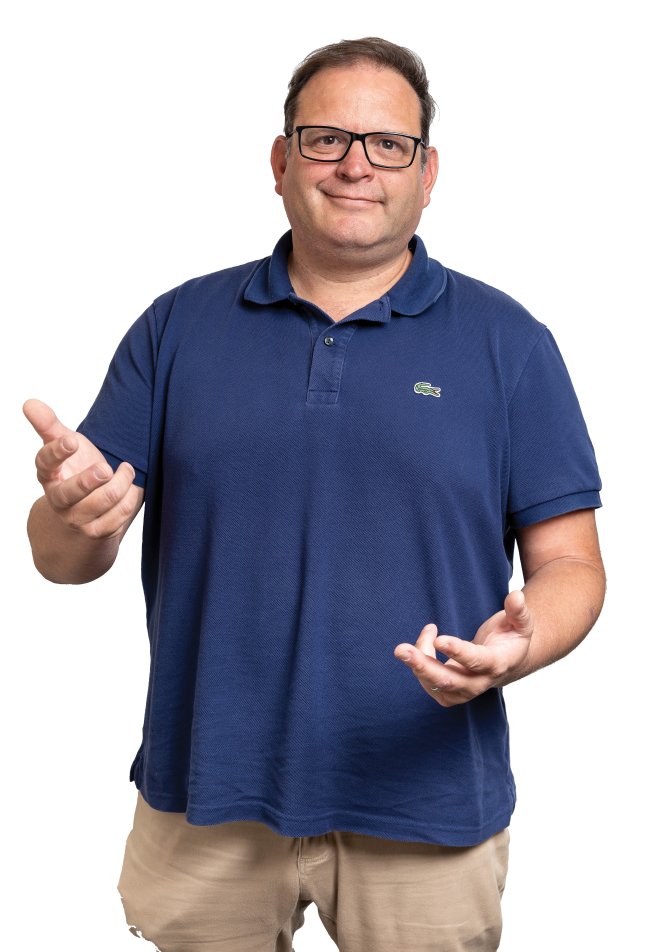
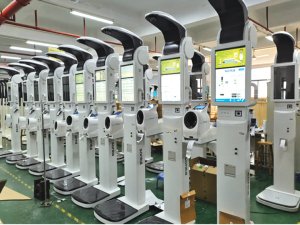

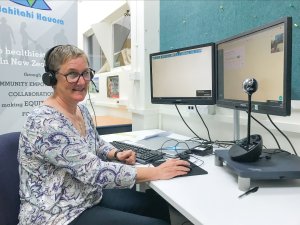
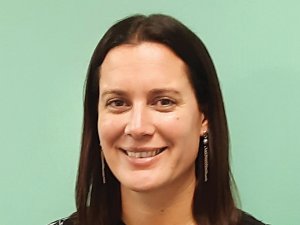






![Barbara Fountain, editor of New Zealand Doctor Rata Aotearoa, and Paul Hutchison, GP and senior medical clinician at Tāmaki Health [Image: Simon Maude]](/sites/default/files/styles/thumbnail_cropped_100/public/2025-03/Barbara%20Fountain%2C%20editor%20of%20New%20Zealand%20Doctor%20Rata%20Aotearoa%2C%20and%20Paul%20Hutchison%2C%20GP%20and%20senior%20medical%20clinician%20at%20T%C4%81maki%20Health%20CR%20Simon%20Maude.jpg?itok=-HbQ1EYA)
![Lori Peters, NP and advanced health improvement practitioner at Mahitahi Hauora, and Jasper Nacilla, NP at The Terrace Medical Centre in Wellington [Image: Simon Maude]](/sites/default/files/styles/thumbnail_cropped_100/public/2025-03/2.%20Lori%20Peters%2C%20NP%20and%20advanced%20HIP%20at%20Mahitahi%20Hauora%2C%20and%20Jasper%20Nacilla%2C%20NP%20at%20The%20Terrace%20Medical%20Centre%20in%20Wellington%20CR%20Simon%20Maude.jpg?itok=sUfbsSF1)
![Ministry of Social Development health and disability coordinator Liz Williams, regional health advisors Mary Mojel and Larah Takarangi, and health and disability coordinators Rebecca Staunton and Myint Than Htut [Image: Simon Maude]](/sites/default/files/styles/thumbnail_cropped_100/public/2025-03/3.%20Ministry%20of%20Social%20Development%27s%20Liz%20Williams%2C%20Mary%20Mojel%2C%20Larah%20Takarangi%2C%20Rebecca%20Staunton%20and%20Myint%20Than%20Htut%20CR%20Simon%20Maude.jpg?itok=9ceOujzC)
![Locum GP Helen Fisher, with Te Kuiti Medical Centre NP Bridget Woodney [Image: Simon Maude]](/sites/default/files/styles/thumbnail_cropped_100/public/2025-03/4.%20Locum%20GP%20Helen%20Fisher%2C%20with%20Te%20Kuiti%20Medical%20Centre%20NP%20Bridget%20Woodney%20CR%20Simon%20Maude.jpg?itok=TJeODetm)
![Ruby Faulkner, GPEP2, with David Small, GPEP3 from The Doctors Greenmeadows in Napier [Image: Simon Maude]](/sites/default/files/styles/thumbnail_cropped_100/public/2025-03/5.%20Ruby%20Faulkner%2C%20GPEP2%2C%20with%20David%20Small%2C%20GPEP3%20from%20The%20Doctors%20Greenmeadows%20in%20Napier%20CR%20Simon%20Maude.jpg?itok=B0u4wsIs)
![Rochelle Langton and Libby Thomas, marketing advisors at the Medical Protection Society [Image: Simon Maude]](/sites/default/files/styles/thumbnail_cropped_100/public/2025-03/6.%20Rochelle%20Langton%20and%20Libby%20Thomas%2C%20marketing%20advisors%20at%20the%20Medical%20Protection%20Society%20CR%20Simon%20Maude.jpg?itok=r52_Cf74)
![Specialist GP Lucy Gibberd, medical advisor at MPS, and Zara Bolam, urgent-care specialist at The Nest Health Centre in Inglewood [Image: Simon Maude]](/sites/default/files/styles/thumbnail_cropped_100/public/2025-03/7.%20Specialist%20GP%20Lucy%20Gibberd%2C%20medical%20advisor%20at%20MPS%2C%20and%20Zara%20Bolam%2C%20urgent-care%20specialist%20at%20The%20Nest%20Health%20Centre%20in%20Inglewood%20CR%20Simon%20Maude.jpg?itok=z8eVoBU3)
![Olivia Blackmore and Trudee Sharp, NPs at Gore Health Centre, and Gaylene Hastie, NP at Queenstown Medical Centre [Image: Simon Maude]](/sites/default/files/styles/thumbnail_cropped_100/public/2025-03/8.%20Olivia%20Blackmore%20and%20Trudee%20Sharp%2C%20NPs%20at%20Gore%20Health%20Centre%2C%20and%20Gaylene%20Hastie%2C%20NP%20at%20Queenstown%20Medical%20Centre%20CR%20Simon%20Maude.jpg?itok=Z6u9d0XH)
![Mary Toloa, specialist GP at Porirua and Union Community Health Service in Wellington, Mara Coler, clinical pharmacist at Tū Ora Compass Health, and Bhavna Mistry, specialist GP at Porirua and Union Community Health Service [Image: Simon Maude]](/sites/default/files/styles/thumbnail_cropped_100/public/2025-03/9.%20Mary%20Toloa%2C%20Porirua%20and%20Union%20Community%20Health%20Service%20in%20Wellington%2C%20Mara%20Coler%2C%20T%C5%AB%20Ora%20Compass%20Health%2C%20and%20Bhavna%20Mistry%2C%20PUCHS%20CR%20Simon%20Maude.jpg?itok=kpChr0cc)